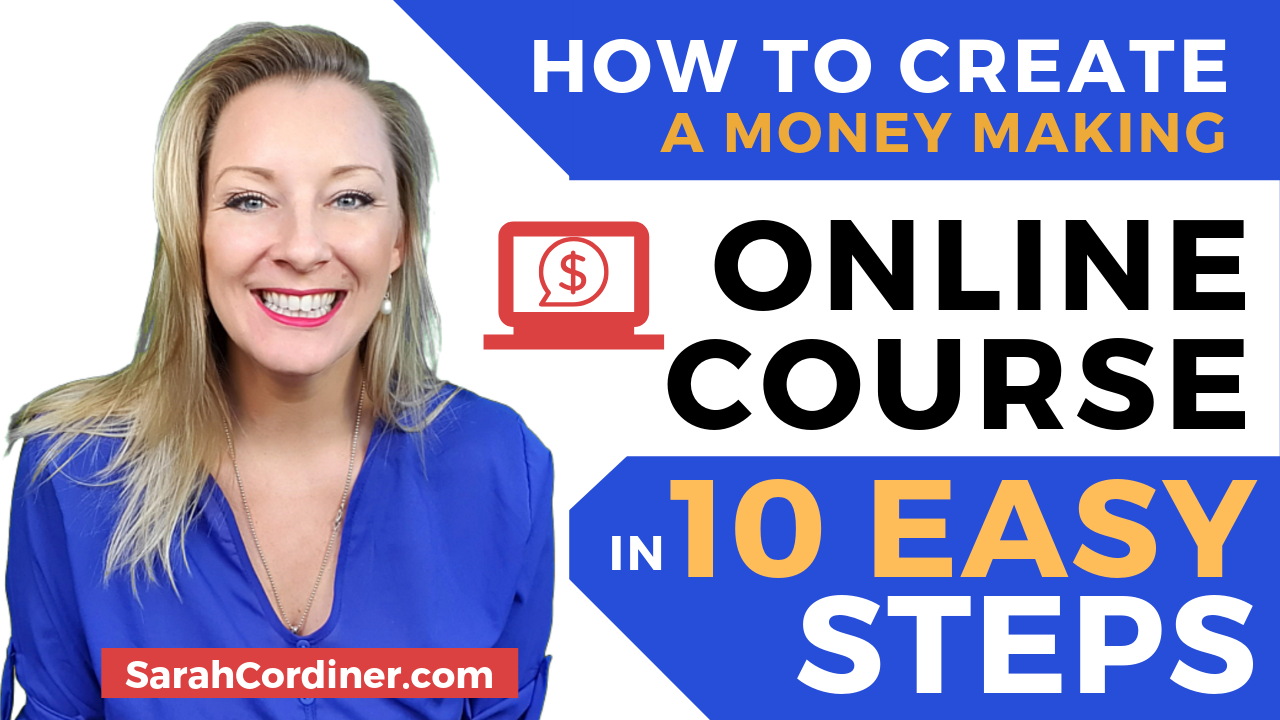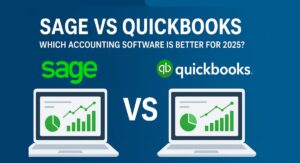Creating online courses can be a rewarding endeavor. It allows you to share your knowledge with a global audience.
In today’s digital age, online learning is booming. More people than ever seek flexible, accessible ways to learn new skills. Crafting an online course can be your ticket to reaching these eager learners. You might wonder where to start or how to ensure your course stands out.
This blog will guide you through the essential steps. From planning your content to choosing the right platform, you’ll learn what it takes to create an engaging, successful online course. Let’s embark on this journey to make your expertise shine and help others grow.
Choosing Your Course Topic
Choosing your course topic is the first and most crucial step. The right topic can attract learners and ensure your course’s success. It’s important to pick a topic that you are passionate about and that has demand in the market.
Identifying Your Expertise
Start by identifying what you are good at. Make a list of your skills and knowledge. Think about your hobbies, professional experience, and academic background. What topics do you enjoy discussing or teaching? Your expertise will make your course unique and valuable.
Researching Market Demand
After identifying your expertise, research market demand. Check online platforms like Udemy, Coursera, and Skillshare. Look for courses similar to your idea. See how popular they are and read reviews. This will help you understand what learners are looking for. Use tools like Google Trends to see if your topic is trending.
Ask your audience what they want to learn. Use surveys and social media polls. This feedback is crucial in shaping your course content. Make sure there is a balance between your passion and market demand. This will increase the chances of your course being successful.

Credit: foundr.com
Planning Your Course Content
Creating an online course can be rewarding. The first step is to plan your course content. This ensures your material is organized and easy to follow. Planning helps in delivering clear, concise, and engaging lessons. Let’s break down this process.
Outlining Course Modules
Start by outlining the course modules. This gives a clear structure to your course. Each module should cover a specific topic. This makes it easier for students to follow along.
| Module Number | Module Title | Module Description |
|---|---|---|
| 1 | Introduction to the Course | Overview of what the course will cover. |
| 2 | Basics of the Subject | Fundamental concepts and terms. |
| 3 | Advanced Topics | In-depth exploration of complex ideas. |
Creating A Lesson Plan
A well-structured lesson plan is crucial. It helps in delivering content in a logical sequence. Here’s a simple way to create one:
- Identify the main objective of the lesson.
- Break down the lesson into smaller sections.
- Include activities and assessments.
- Ensure each section has clear instructions.
Each lesson should have a beginning, middle, and end. Start with an introduction. Explain the main content. Then, end with a summary or quiz. This keeps students engaged and reinforces learning.
Incorporate various teaching methods. Use videos, readings, and quizzes. This caters to different learning styles. Remember to review and update your lesson plan regularly. This ensures it stays relevant and effective.
Developing Engaging Course Material
Creating online courses involves more than just sharing information. The material must be engaging to keep learners interested. Engaging content helps students understand and remember the material better. To achieve this, use multimedia elements and interactive activities.
Using Multimedia Elements
Multimedia elements include videos, images, and audio. These make the course more dynamic. Videos can demonstrate concepts visually. They can include animations or live demonstrations. Images break up text and provide visual examples. Audio files can explain complex ideas or add a personal touch. Use these elements to cater to different learning styles.
Incorporating Interactive Activities
Interactive activities engage learners by involving them in the process. Quizzes and polls test understanding and provide immediate feedback. Discussion forums allow students to share ideas and learn from each other. Simulations and case studies offer hands-on experience. These activities make learning more active and enjoyable. They also help students apply what they have learned.
Recording High-quality Videos
Creating online courses requires videos that are clear and engaging. High-quality videos can make your course stand out. They help learners stay interested and absorb the material better. Let’s dive into key steps to record high-quality videos.
Setting Up Your Equipment
Good equipment is essential for recording quality videos. Here is a list of basic tools you will need:
- Camera: Use a DSLR, mirrorless camera, or a high-resolution webcam.
- Microphone: Invest in a good external microphone for clear audio.
- Lighting: Softbox lights or ring lights can improve video quality.
- Tripod: Keep your camera steady with a reliable tripod.
- Backdrop: A clean and simple background enhances professionalism.
Set up your equipment in a quiet, well-lit room. Ensure your camera is at eye level. This makes your videos more personal and engaging.
Tips For Effective Delivery
Delivery is crucial for keeping your audience engaged. Here are some tips:
- Be Natural: Speak as if you are talking to a friend. Avoid being too formal.
- Practice: Rehearse your script to become comfortable with the material.
- Engage with the Camera: Maintain eye contact with the camera. This helps in connecting with your audience.
- Use Gestures: Hand movements and facial expressions make your delivery more lively.
- Keep it Short: Break your content into short, digestible segments. This keeps the learners’ attention.
Remember, a confident and clear delivery can make your content more impactful. Happy recording!
Editing And Polishing Your Videos
Editing and polishing your videos is crucial for creating professional online courses. High-quality videos enhance the learning experience. This process involves using editing software, adding graphics, and incorporating effects. Let’s explore these steps in detail.
Using Editing Software
Choosing the right editing software is essential. Popular options include Adobe Premiere Pro, Final Cut Pro, and DaVinci Resolve. These tools offer various features to enhance your videos. They help in trimming unnecessary parts, adding transitions, and improving audio quality.
- Adobe Premiere Pro: Great for advanced editing.
- Final Cut Pro: Ideal for Mac users.
- DaVinci Resolve: Offers both free and paid versions.
Here’s a simple guide to get started:
- Import your video files into the software.
- Organize your clips in the timeline.
- Trim and cut unnecessary parts.
- Add transitions between clips.
- Adjust the audio levels for clarity.
Adding Graphics And Effects
Graphics and effects make your videos engaging. They help illustrate points and keep learners interested. Consider adding the following elements:
- Text Overlays: Highlight key points.
- Animations: Explain complex concepts.
- Background Music: Set the tone of your video.
Here’s how to add graphics and effects:
- Create or find suitable graphics.
- Import them into your editing software.
- Place them in the timeline where needed.
- Adjust the size and position of the graphics.
- Add effects like fades or transitions.
Remember to keep it simple. Overloading your videos with effects can be distracting. Use them sparingly to enhance understanding.

Credit: foundr.com
Hosting Your Online Course
Creating an online course is just the first step. Hosting it effectively is equally important. This ensures your students have a smooth experience. Let’s dive into the essential aspects of hosting your online course.
Choosing A Platform
Your course platform is your course’s home. It should be reliable and user-friendly. Popular options include:
| Platform | Key Features |
|---|---|
| Teachable | Simple to use, customizable, good support |
| Udemy | Large audience, marketing support, easy setup |
| Thinkific | Flexible, great customer service, good analytics |
Teachable offers simplicity and customization. Udemy provides access to a large audience. Thinkific is flexible with excellent support.
Setting Up Your Course Page
The course page is where students land first. It should be engaging and informative. Here’s how to set it up:
- Create a compelling title: Make it clear and attractive.
- Write a brief description: Explain what the course covers.
- Add an introductory video: Give a sneak peek of the course content.
- Include key details: Add course duration, objectives, and prerequisites.
- Use high-quality images: They make the page visually appealing.
Ensure the page reflects your course’s value. Use clear titles and engaging descriptions. Include introductory videos and high-quality images.
Marketing Your Course
Creating an online course is only half the battle. To ensure success, you need to effectively market your course. Marketing your course helps you reach a wider audience and attract more students. Below are some key strategies to market your online course effectively.
Building An Email List
Building an email list is crucial for marketing your course. Email marketing allows you to engage with potential students directly. Start by offering a free resource related to your course. This can be an e-book, a mini-course, or a useful checklist.
- Create a landing page for your free resource.
- Promote this landing page on your website and social media.
- Collect email addresses in exchange for the free resource.
Once you have a list, send regular updates. Share valuable content, course updates, and special offers. Always provide value to keep your audience engaged.
Utilizing Social Media
Social media is a powerful tool for marketing your course. Platforms like Facebook, Instagram, and LinkedIn can help you reach a large audience.
Here are some tips for using social media:
- Choose the right platform for your audience.
- Create engaging content like videos, infographics, and blog posts.
- Use social media ads to target specific demographics.
Interact with your followers by responding to comments and messages. Host live sessions or webinars to showcase your expertise and answer questions.
By building an email list and utilizing social media, you can effectively market your online course. These strategies will help you reach more students and grow your audience.

Credit: sarahcordiner.com
Engaging With Your Students
Creating an online course is only the beginning. Engaging with your students is crucial for their success. It helps them feel supported and encourages them to complete the course. Let’s explore some effective ways to engage with your students.
Providing Feedback
Timely feedback is essential for student growth. It helps them understand their progress and areas needing improvement. Here are some tips for providing effective feedback:
- Be specific. Mention what the student did well and what can be improved.
- Be timely. Provide feedback soon after assignments are submitted.
- Be constructive. Focus on how the student can improve in the future.
| Feedback Type | Description |
|---|---|
| Written Feedback | Provide detailed comments on assignments. |
| Video Feedback | Record a short video to explain your feedback. |
Creating A Community
A sense of community makes students feel connected. It encourages them to engage more deeply with the course. Here are some ways to build a community:
- Start a discussion forum. Encourage students to ask questions and share ideas.
- Host live sessions. Schedule regular live sessions to interact with students in real-time.
- Use social media groups. Create a private group on platforms like Facebook or LinkedIn.
Engagement is key to an effective online course. Providing feedback and creating a community helps students stay motivated and succeed.
Evaluating Course Success
Creating an online course is only the beginning. Evaluating the success of your course is vital. This helps you understand its impact and improve future courses. Let’s explore two key areas: collecting student feedback and analyzing course metrics.
Collecting Student Feedback
Student feedback is crucial. It gives direct insight into their learning experience. Use surveys to gather honest opinions. Ask specific questions about course content, delivery, and resources. Keep questions simple and to the point.
Encourage students to be honest. Assure them their feedback will improve the course. Offer multiple ways to provide feedback. This could include online forms, emails, or discussion forums. Make feedback collection a continuous process.
Analyzing Course Metrics
Course metrics offer quantitative data. These numbers tell you how students engage with the course. Track metrics like completion rates, quiz scores, and login frequencies. High completion rates indicate effective content. Low rates suggest areas needing improvement.
Analyze quiz scores to see if students understand the material. Frequent logins show consistent engagement. Look for patterns and trends in the data. Use these insights to make data-driven decisions. This will help enhance course quality and student satisfaction.
Frequently Asked Questions
What Are The Benefits Of Creating Online Courses?
Creating online courses allows you to reach a global audience, generate passive income, and establish yourself as an authority in your field. It also provides flexibility in teaching and learning.
How Do I Choose A Course Topic?
Choose a topic you are passionate about and have expertise in. Research market demand to ensure your topic is relevant and sought after by your target audience.
What Tools Do I Need To Create An Online Course?
You’ll need a computer, a reliable internet connection, a camera or webcam, a microphone, and course creation software or an LMS (Learning Management System).
How Can I Market My Online Course?
Utilize social media, email marketing, and content marketing to promote your course. Collaborate with influencers and use paid ads to reach a wider audience.
Conclusion
Creating online courses can seem challenging. But with the right steps, it becomes manageable. Plan your content carefully. Use engaging visuals. Keep your audience in mind. Test and refine your course. Success comes with patience and practice. Start today, and share your knowledge online.




